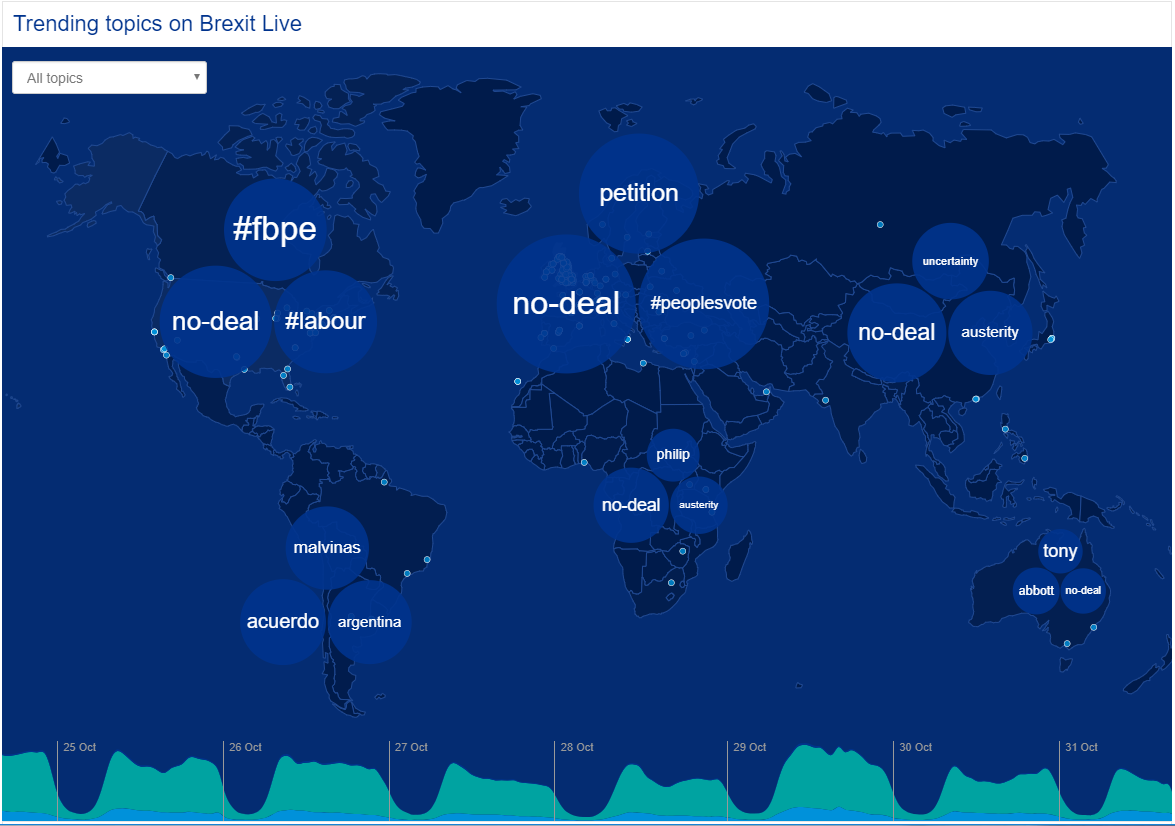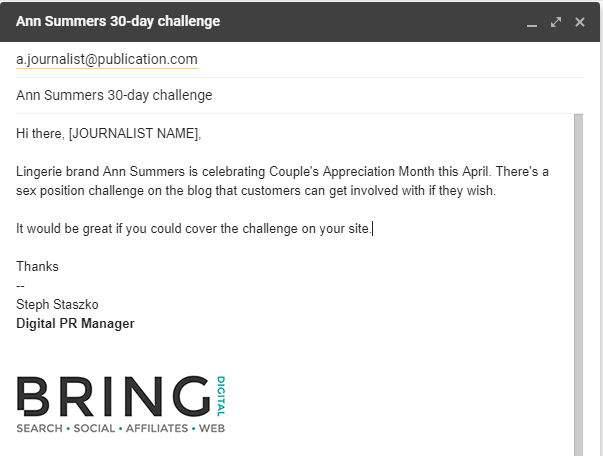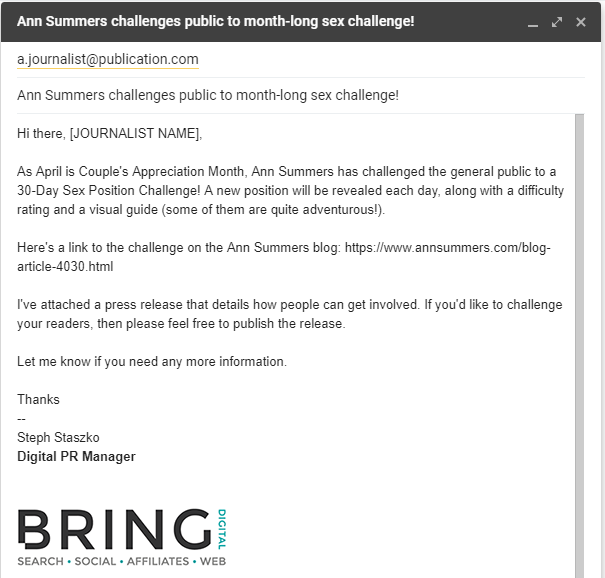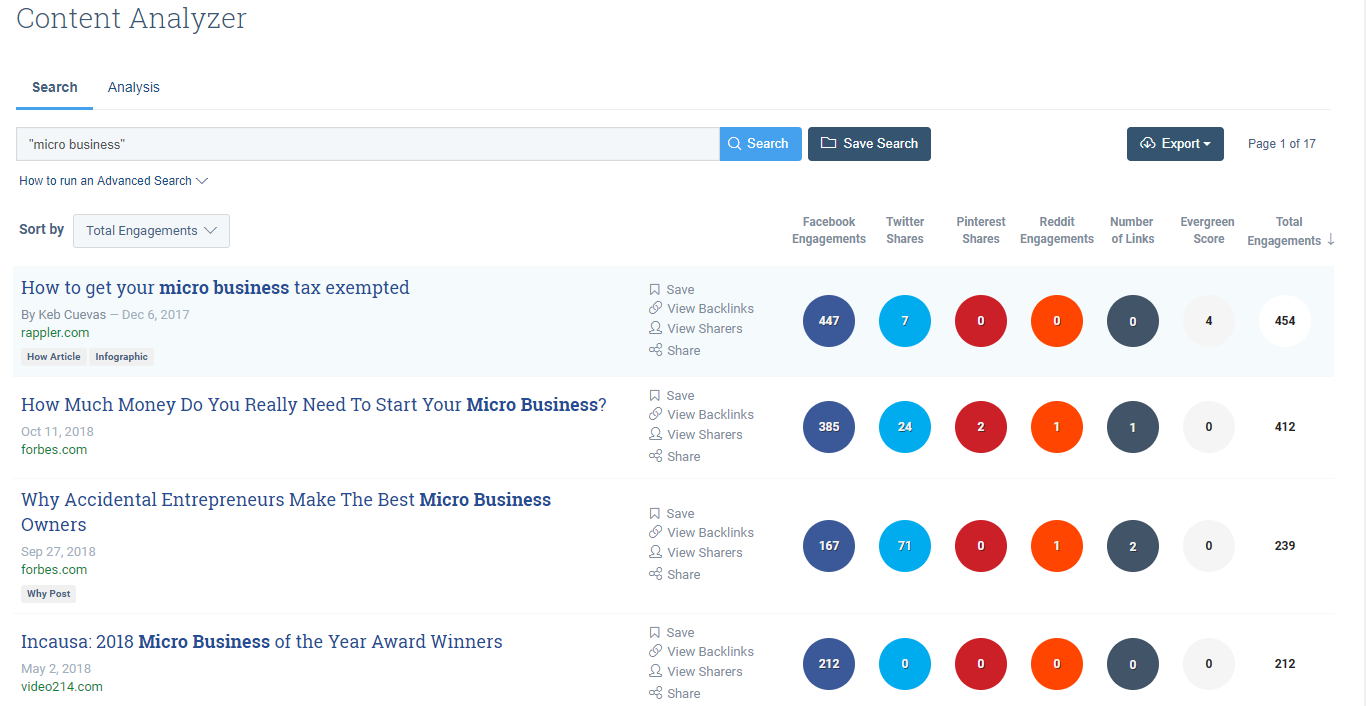When you’re outreaching to journalists, there are certain mistakes you must avoid.
No amount of smooth-talking can get a journalist to pick up a piece about something they’ve already covered or — worse — a boring internal announcement that someone’s MD believes the world wants to hear. And don’t forget the worst sin of all: getting the journalist’s name wrong.
This is basic stuff, sure — but it still happens every single day.
And journalists are sick of it.
Reporters have to file through hundreds of requests a day, so they have little time to dwell on things they’re not interested in. If your content doesn’t stand out, it will be forgotten amongst the masses of unread ‘publish me’ pitches and headed straight for the ‘Trash’ folder.
Most marketers have been there. It’s not fun. Luckily, throughout the past seven years of managing digital PR campaigns for different clients, I’ve learned some important lessons about journalists that are worth sharing.
Here are five reasons why journalists aren’t publishing your content — and what you can do to change that.
Great stories — films, plays, and books — are always about people.
The same is true in journalism. It’s not enough to frame your hook around a faceless company or some new data. It’s too sterile of a story to get a reader invested, and any good journalist will decline to cover a piece they think no one will read.
Anita Wing Lee, in her time as a host for Founder FM, put it this way:
“People don’t follow brands, they follow people… Let’s face it, do we really care that much about Apple as a brand or is hearing Steve Jobs’ story more inspiring?”
Consider the human interest story. Andrew Brookes explains the power of a human interest story in an insightful article for Zazzle Media:
“Consider… the rise of the Vlogger. The YouTube shows produced by these people invite us into their lives and homes. We invest in them and their lives and they are able to deliver matter on what feels like a one-to-one individual level. Our human connection with the subject makes the content more enjoyable and powerful.”
Brookes goes on to point out that the challenge for businesses is “to realise that their customers appreciate seeing their ‘human side’.” He asserts that “[e]very company has a story to tell and they shouldn’t be afraid to tell it, offering a personal account of how and why they were formed and developed.”
If your story is about a company, centre around an individual from that company who’s passionate and interesting. If it’s about data, talk about the human implications of that data: who will it affect, and why? If it’s about a person within your business, what makes them stand out? Do they have an interesting backstory?
Centre your story around people and people will identify with it. And when people identify with it, a journalist will want to publish it.
Last year in the US, the most populous English-speaking country in the world, 1 in 4 people didn’t read a single book.
Compare that to the fact that YouTube is predicted to hit nearly 2 billion users by 2021.

Source: Statista
In an age of information overload, entertainment is king — and few mediums are quite as entertaining as visual and video content. So, unless you have a unique and authoritative opinion on a breaking news topic, you need to go beyond a simple write-up if you want to get a journalist’s attention.

Source: https://imgur.com/468Awwl
Make sure that you include visual assets within stories that aren’t completely new. Those assets could take the form of a video (posts with videos generate 3 times as many links as posts without) or graphics that help visualise complex data.
This interactive map is an outstanding example of visualising data to create a narrative. It details the food hygiene ratings of every restaurant in Manhattan and shows how you can make existing data interesting by making it visual and — if you have the dev time — interactive, too.

Full interactive map available at http://nycfoodiverse.com/.
Here’s a piece of interactive content we recently produced for one of our clients, Rahman Ravelli. They’re a legal practice specialising in serious and corporate fraud, so we put together some interactive data about the implications of Brexit on the UK’s private sector.

An example of interactive content we produced for one of our clients. See the full piece at https://www.rahmanravelli.co.uk/resources/brexit/index.html
I’ll let you in on a little secret:
Journalists aren’t mind-readers.
Instead, they’re living in a world of tight deadlines, coffee shortages and fried prefrontal cortexes. So if you expect journalists to sift through a ton of data just to find the story in there, you won’t get coverage, no matter how pretty your assets are.
Make your narrative as clear as possible for a journalist. Extract the key points of your press release and place them in your outreach email. That way, they can quickly identify the points that will be of most interest to them so they can begin to build their own story.
When we were outreaching for what turned out to be a particularly successful campaign we worked on for Ann Summers, we wouldn’t have got far if we’d been ambiguous in our initial email. Here’s is an example of an email that would have been too vague to get picked up:

Why a journalist won’t respond:
Now, here’s an outreach email that would get a journalist’s attention:

Why a journalist will respond:
To summarise: your email should concisely tell the journalist exactly what you’re offering, how and why they can use it and how you’ve made their life easier.
Imagine you’ve spent hours, days or maybe even weeks on a piece of content you think is amazing — life-changing, in fact. You’ve compiled some amazing data about the state of social media advertising, chock full of visual assets, expert opinion and a great human interest story at the centre of it to round it all off.
Now imagine what would happen if you sent this incredible piece of content about social media marketing to, say, a home baking magazine.
Exactly.
The vast majority of digital PR executives don’t make mistakes like this — at least, not often, and definitely not to the same extent. But even if you’re not sending your content to the wrong type of publication, there’s still another trap into which many PRs fall.
That trap is failing to recognise your journalist’s niche.
Think about it this way: not all business journalists will report on all types of business. A publication like SME Magazine is focused on talking about what matters to small and medium-sized businesses, so they’re unlikely to report on expansion strategies for multi-national corporations.
You should also consider what journalists themselves are interested in reporting on. Research what they write and make a note of some key topics that they return to.
Take for example this journalist from Forbes:

Here, David tells us what he’s interested in writing about in his bio. His background as a micro business owner means he’s probably going to be receptive to stories from that background, especially if they can provide help to his readers: people running micro businesses themselves.
We can take a quick look at the other stories he’s covered to check that our theory is sound:
How easy is that?
In fact, David turned out to be a great opportunity to generate coverage for Bring Digital, since it was only a few years ago that we were still a micro business ourselves.
We even managed to get our MD David Ingram into one of those articles: ‘How to Avoid Start-up Mistakes in Your Micro Business’.

Our MD David Ingram appearing in Forbes. See the full article here: https://www.forbes.com/sites/davidhowell1/2018/10/11/how-to-avoid-start-up-mistakes-in-your-micro-business/#3824fae72ef8
The simple lesson here? Make sure you send content that you know a journalist will be interested in. It’s way more effective than sending out a hundred pitches and hoping something sticks.
When Martin Scorcese’s Goodfellas was first shown to test audiences in California, the reception was poor. Terrible, actually. According to Scorcese, over 100 people walked out of the film before the credits finally rolled.
The reason? For the audience, it was just too violent. The original cut of Goodfellas was filled to the brim with stabbings and brutal murders, which just rubbed audiences the wrong way. Scorcese had to work tirelessly with his editors to turn the film into the triumph it is, so future audiences would save it from being canned by Warner Bros before it even saw the light of day.
Thankfully, the work paid off. Today, Goodfellas is one of the most critically acclaimed movies of all time.
The test audience that Scorcese had to endure acted as a barometer for the reception — and ultimate success — of his film. In the same way, you need to convince journalists of the success of your content by using a ‘test audience’ of your own: social media.
Firstly, you should analyse stories that journalists have recently shared that have performed well on social media channels.
ResponseSource’s media database offers a feature that allows you to search for a keyword and see what journalists have written an article or tweeted about that topic.
For example, for a thought leadership piece for a client, we wanted to issue expert commentary about the Patisserie Valerie fraud speculations. We searched the keyword in the system and found journalists who have shown interest in that topic recently:

Once you find journalists that you think might be a good fit, you can check out their related articles and tweets to see what they’ve already covered. That way, you can ensure you don’t cover old ground with the content you send them.
You can also use tools like BuzzSumo to identify which types of content in your topic area get the most social media engagement.
Let’s take the topic of ‘micro businesses’ as an example. If we input ‘micro business’ as a keyword into BuzzSumo’s Content Analyzer, we get plenty of useful stats about which types of content perform well in that area:

Source: buzzsumo.com
From here, we can see that stories about micro business money management — be that about taxes or raising the funds to start your micro business — get lots of social engagement.
If we had a piece of content all about money management in a micro business — one that takes a different angle to what’s been done before — we could use this as evidence to encourage a journalist to cover our story.
After all, who doesn’t want to run a piece that they think readers will share?
Getting coverage in 2018 is simply a combination of common sense, using technology intelligently and going the extra mile.
Journalists routinely experience ‘pitch fatigue’, so when they see a piece of outreach that takes them into consideration — one that understands what they’re interested in, the key parts of the story, and gives evidence to support why they should take the time to run it — it’s like a breath of fresh air.
Don’t neglect the more human approach. It almost always pays off.











